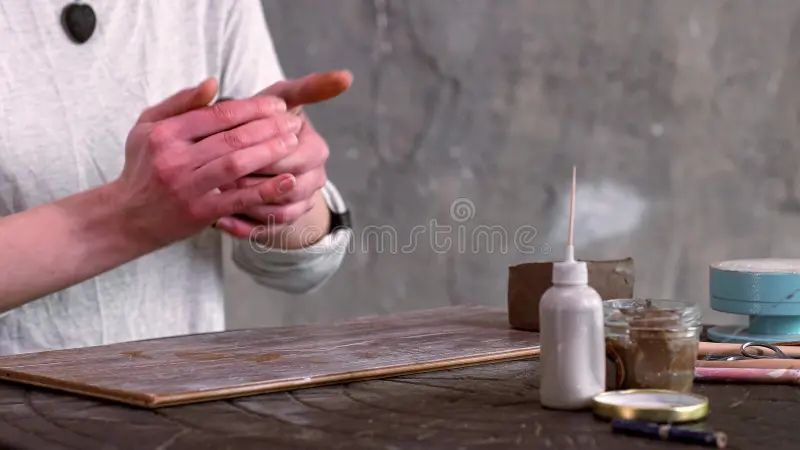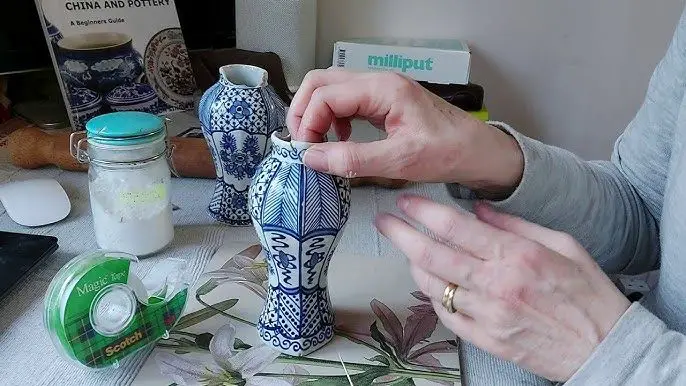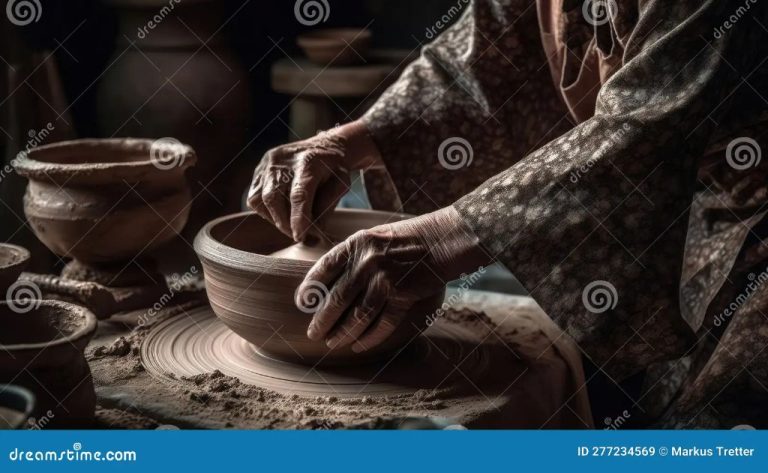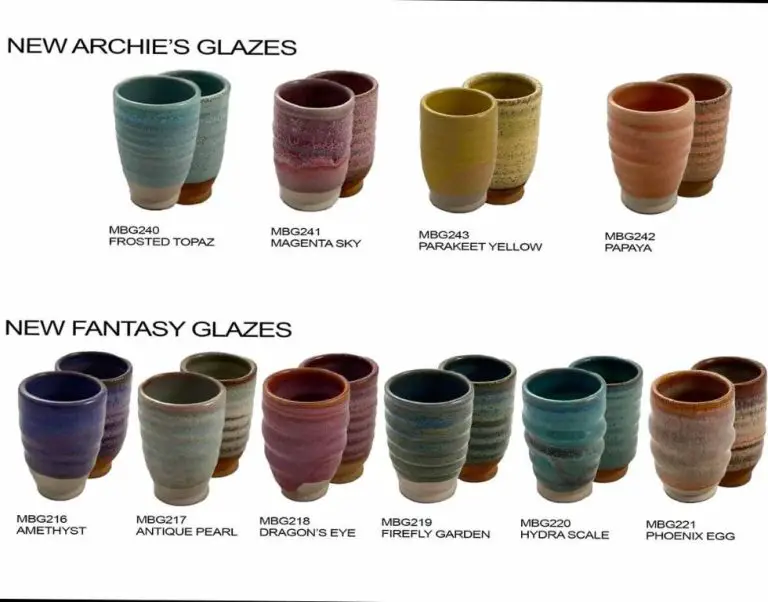What Are Clay Modelling Tools Called?
Clay modeling tools refer to the various implements used by artists and sculptors to shape, texture, cut, smooth, and refine clay surfaces on pottery, sculptures, and other clay artworks.
Clay is a popular artistic medium due its versatility and malleability. With the proper tools, artists can transform clay into elaborate vases, realistic busts, abstract sculptures, and more.
Modeling tools allow artists to add fine details, create surface textures, smooth seams between clay pieces, cut precise shapes, and achieve their desired forms and finishes in clay.
Clay modeling toolkits contain a range of specialized instruments like loop tools, ribbon tools, cutting wires, wooden sculpting sticks, metal loop tools, and ceramic tools. Artists select the appropriate tools for the techniques required at each stage of the modeling process.
Having the right high-quality clay modeling tools allows artists to fully leverage the creative potential of clay and produce professional, refined artwork.
History
Clay modeling tools have an extensive history dating back thousands of years. The earliest known clay sculptures were created by prehistoric humans around 25,000 BCE, often taking the forms of small figurines and pottery [1]. In ancient Mesopotamia, Egypt, Greece, and Rome, clay was a popular medium for sculpting figures, vessels, and bricks [2]. Early clay workers likely used simple tools like fingers, sticks, shells, and stones to shape the clay.
As clay sculpting evolved, specialized modeling tools were developed. Basic wire loop tools date back to at least 25,000 BCE. Metal spatulas and wooden modeling sticks appeared during the Egyptian and Greek eras around 500 BCE. More advanced wood and metal sculpting tools like ribs, loops, cutters, and rollers emerged during the Renaissance era as clay sculpting gained popularity [3]. By the 19th century, tool kits with an array of wire, wood, and metal clay working tools became readily available.
Types
There are many different types of clay modeling tools that artists use to sculpt and shape polymer or clay. Some of the most common categories include:
Wire Tools
Wire tools like needle tools have thin, sharp wire ends that can pierce and refine details in clay. They allow for precision and intricate sculpting. Wire loop tools made into different shapes can also smooth and blend clay.
Ribbon Tools
Ribbon tools have thin, flexible blades made of steel or plastic that can slice, scrape and smooth clay surfaces (Firefly Art Supplies, 2022). These ribbon scraper tools help shape curves and fine details.
Loop Tools

Loop tools are wires bent into different shaped loops used to blend clay and create smooth curves and transitions between clay parts (Blick Art Materials, 2023). The rounded edges prevent tearing or gouging the clay.
Texturing Tools
Texturing tools imprint patterns onto clay to create interesting effects. These can be patterned clay rollers, silicone molds, stamps, or custom textures.
Wire Tools
Wire tools are very common for working with clay and ceramics. They come in a variety of styles made from different materials like metal or nylon (Bailey Ceramic Supply).
Metal wire tools like wire loop cutters allow ceramists to slice blocks or slabs of clay cleanly and with precision. These types of wire cutters create smooth edges. Stainless steel wire tools are also useful for cutting excess clay from projects attached to wheels or bats (Wire Clay Cutter).
Nylon clay shapers have wire or metal cores but a nylon coating. These softer tools allow shaping clay without damaging the surface. They come in different shapes like blades, balls, and rounds to provide options for detailed clay work.
Overall, wire tools serve important purposes like cutting clay efficiently, scraping and smoothing surfaces, and detailing intricate shapes and textures.
Ribbon Tools
Ribbon tools are flexible tools made of thin metal strips that can be bent into curves for shaping and sculpting clay. They allow clay artists to create flowing lines, texture, and detail in their pieces. Ribbon tools come in varying widths like 1/16″, 1/8″, 3/16″, 1/4″, etc. The thinnest tools are good for detail work while wider tools can smooth larger areas.
Ribbon tools serve many purposes in clay modeling and sculpting:
- Smoothing clay surfaces – the flexible metal can glide over the clay to blend and even out surfaces
- Adding texture – pressing designs into the clay face with the edge of the ribbon
- Cutting and slicing clay – the thin sharp edge can cut through clay
- Making indentations – pushing the ribbon into the clay
- Shaping – bending and curving the ribbon to contour it to the desired shape
- Detailing – thin ribbons can make fine details like veins, folds, ruffles etc.
Some of the top brands for quality ribbon tools include Kemper, Mudtools, and Amaco. Ribbon tools are commonly sold in sets. The Kemper Mini Ribbon Sculpting Set on Amazon provides a versatile range of ribbon widths good for both detailing and broader smoothing.
Loop Tools
Loop tools, sometimes called ribbon tools, are shaped loops on the end of a handle used for carving, smoothing, shaping, and detailing clay surfaces. The looped end can have different shapes like round, square, triangular which allows the artist to create different effects. Round loops are good for smoothing curves, square loops can scrape into hard angles, and triangular points can carve fine details.
These specialty clay tools help potters and sculptors efficiently cut shapes, trim away excess clay, refine forms, and create patterns or textures in the clay’s surface. They are useful when aiming to achieve a polished look on ceramics as the loops cleanly slice clay. Loop tools provide more control than just using fingers to smooth and shape damp clay.
Loop tools come in many sizes from large 5-6 inch loops to small 1 inch loops. The larger loops are helpful for rapidly removing lots of clay from wheel-thrown pieces while smaller loops finesse details. Most are made from thick, stiff wire flattened on the end and looped around to form the shape. Some sets come with wooden handles while others have handles molded from plastic or rubber for comfort.
High quality professional loop tools can be purchased from specialty retailers like Bailey Ceramic Supply though simple basic loops are also available from general craft stores or online marketplaces like Amazon.
Texture Tools
Texture tools are used in clay modelling and pottery to create different textures and effects on the surface of clay pieces. They allow the artist to mimic textures found in nature like wood, fabric, rope, rocks, and more. Some common types of texture tools include:
- Texture rollers – these are rolling pins covered in materials like burlap, lace, netting, etc. Rolled across the clay, they impart the pattern of the roller’s covering.
- Loop tools – these metal tools have wire loops in various shapes used to create lines, circles, and curved indentations.
- Ribs – usually made of wood, metal, or rubber, these are scraping tools dragged across clay to create striated effects.
- Needles – used to scratch fine lines or poke holes.
- Clay shredders – toothed blades that shred and rough up the clay surface when dragged across.
Applying textures adds visual interest, provides an organic feel, and introduces variety on both functional and decorative clay pieces. Texturing can be done when the clay is soft, leather hard, or dry. The timing impacts the crispness and depth of the textures achieved. Mastering texture tools allows artists to expand their creative options and make their work stand out.
Sources:
https://www.amazon.com/Clay-Texture-Tools/s?k=Clay+Texture+Tools
https://www.midsouthceramics.com/product-category/tools-supplies/pottery-texture-tools/
Cutting Tools
Cutting tools are essential for shaping and refining clay sculptures. Here are some of the main types of cutting tools:
Wire clay cutters are made of thin, taut wires mounted in a handle. They are used for cutting clay cleanly off the wheel or cutting clay blocks into smaller sections. The taut wire creates clean, smooth cuts.
Needle tools have sharp, pointed metal needles mounted in a handle. The sharp points are used for fine detail trimming and cutting. Needle tools allow precision cuts for intricate detailing.
Trimming tools have sharp, angled metal blades for trimming and refining clay surfaces. Double-bladed trimmers have blades set at different angles, allowing versatility in the type of trimming cuts.
Clay knives have sharp blades fixed to handles. They are used for cutting, smoothing and trimming clay surfaces. Flexible blades provide control for delicate trimming and detailing.
These cutting tools allow clay artists to accurately shape forms, trim away excess clay, refine details, and create finished sculptures with clean, well-defined edges and surfaces.
Rolling Tools
Rolling tools are used to flatten and smooth clay for even thickness when creating pieces.1 The most common rolling tools are clay rollers and acrylic rollers.
Clay rollers are usually made of wood or acrylic and come in various sizes and shapes like squares, rectangles, and cylinders. They help roll out clay smoothly and evenly. Clay rollers with ridges and patterns can also imprint textures onto clay.
Acrylic rollers are clear plastic rollers that allow seeing the clay thickness while rolling. They come in basic shapes as well as specialized wedge shapes to roll and taper the edges. Acrylic rollers are easy to clean and maintain.2
The main purposes of rolling tools are to roll clay into an even thickness for consistency, flatten the clay into sheets for cutting shapes, smooth seams between clay pieces, and imprint patterns and textures. Rollers allow clay artists to achieve the desired thickness and effects when manipulating clay.3
Cleaning and Storage
Proper cleaning and storage of clay tools is important to keep them in good condition. Here are some tips for cleaning clay residue off your tools:
Soak the tools in rubbing alcohol to loosen dried clay and wipe clean with a cloth soaked in alcohol. You can also use an old toothbrush to scrub off stubborn clay residue (source). Be gentle when scrubbing wire tools to avoid bending the wires.
After cleaning, store modeling tools in closed containers to prevent dust buildup and keep them organized. Many artists use tackle boxes, craft storage containers or even repurposed jars. Wrap wire tools in cloth or lay them side by side to prevent tangling and damage. Proper storage keeps tools in top condition for your next clay project.




